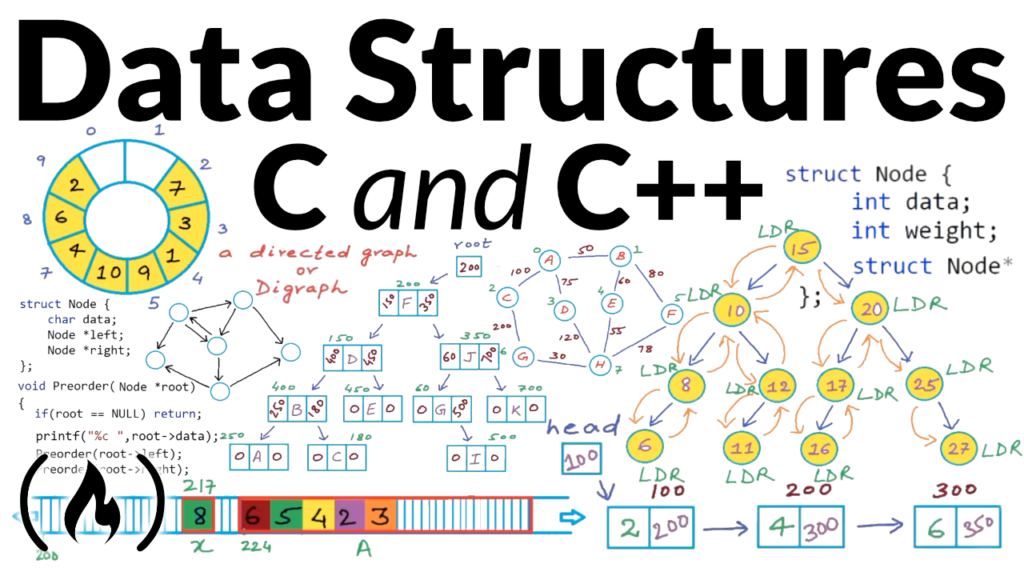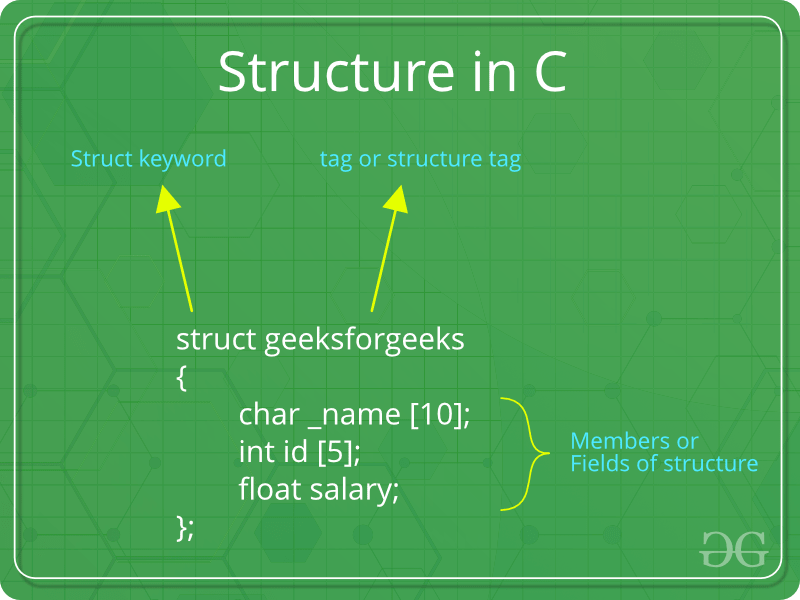Data structures are the foundation of most programs and are essential for efficient and correct operation. Data structures in C allow you to create, access, and modify data in a variety of ways. In this article, we will discuss the basics of data structures in C and how to use them.
The most common data structure is the array. Arrays allow you to store multiple values in a single variable. To create an array, you first need to declare the type of array and the size of the array. For example, int myArray[5] would create an integer array with 5 elements. You can then access individual elements of the array by using the index number of the element within the brackets. myArray[2] would return the third element in the array.
Another common data structure is the linked list.

Array
An array is a data structure that stores a collection of data elements of the same type. The number of elements in an array is fixed when the array is created. The first element in an array is at index 0, and the last element in an array is at index n-1, where n is the number of elements in the array.
Arrays can be used to store primitive data types such as int and char, or objects of a user-defined type. When using arrays to store objects, the object’s class must implement the operator[]() function, which returns a reference to the object at that position in the array.
Arrays can be accessed using their index location within the array. For example, if myArray has 5 elements and we want to access the 3rd element, we would use myArray[3].
Stack
C programming classes online offer students the opportunity to learn about data structures using the C programming language. One of the most popular data structures is the stack. A stack is a linear data structure that allows insertion and deletion of elements at one end only, called the top of the stack. The last element inserted into a stack is the first one removed.
Queue
Queue is a data structure that allows insertion and deletion of elements at one end, called the rear, and removal of elements from the other end, called the front. The front always points to the element that is being removed. The rear may or may not point to the last inserted element. Queue follows FIFO (First In First Out) principle.
Queues are commonly used in computer science to implement a variety of data structures such as lists and stacks. A queue can be implemented using an array,linked list or vector. In C programming language, queues can be created using C++ STL class template queue or C++ standard library function queue().
There are several ways to use queues in C programming language. One way is to create a queue on the heap using new operator and delete operator when you are done with it.
Linked List
A linked list is a data structure that stores data in a sequential manner. Each element in the list is linked to the next element using a pointer. This allows the list to be dynamic, meaning that it can grow and shrink as needed.
The most common use for a linked list is to store a sequence of data. However, it can also be used to store other types of information, such as nodes in a tree.
There are many benefits to using a linked list. It is an efficient way to store data, and it can be easily edited and updated. It also requires very little memory, making it ideal for applications with limited resources.
Trees
One of the most important aspects of programming is data structures. Data structures allow you to organize and store data in a way that makes it easy to access and use. In C, there are several different data structures that you can use. In this article, we will discuss the three most common data structures: arrays, linked lists, and trees.
Arrays are one of the simplest data structures in C. An array is a sequence of elements that are all of the same type. The elements in an array can be accessed by their position in the array. For example, if you have an array of integers called numbers, you can access the element at position 5 by typing numbers[5].
Linked lists are another common data structure in C. A linked list is a collection of nodes where each node contains a reference to the next node in the list.
Hashing
Hashing, also known as a hash table, is a data structure that is used to store data in a more efficient way. In hashing, each item is hashed into a unique value. This value is then used to lookup the item in the hash table. If the item is not found in the hash table, then it is added to the table. This process makes looking up an item in a hash table very quick and efficient.
You may also like – 5 Best Paraphrasing Online Software in 2022



